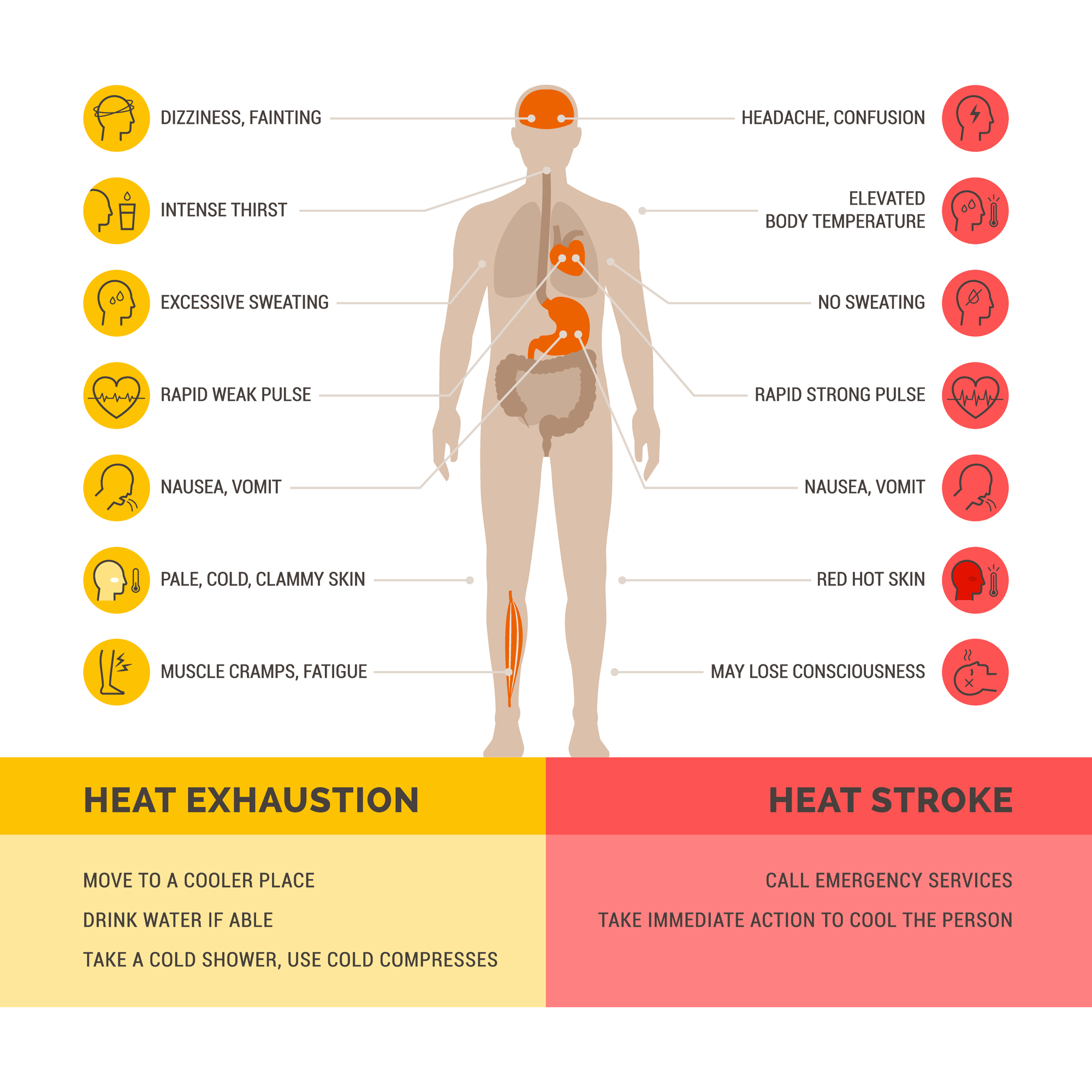HEAT ILLNESES
1
Heat Exhaustion
Epidemiology: Can occur at any age and is the most common type of heat-induced condition.
Mechanism of Injury/Description: Heat exhaustion is defined as a core temperature of less than 102.2 degrees F (39 degrees C) and no central nervous system dysfunction. This can be a precursor to heat stroke.
Signs/Symptoms: Nausea, vomiting, and profuse sweating are signs and symptoms of heat exhaustion.
Diagnosis: Determined by physical exam with a core temperature of less than 102.2 degrees F (39 degrees C).
Treatment: Treatment for heat exhaustion includes IV hydration, table salts, and cooling.
Prevention: To prevent heat exhaustion stay hydrated, check temperatures in gymnastics facilities, and allow time for breaks/rest when temperatures increase.
Gymnastics Medical Provider PEARLS: Heat exhaustion can be a precursor to heat stroke. Watch carefully for signs and symptoms of gymnasts during summer workouts, as well as the room temperature inside the gymnastics facility in the summertime.
Gymnast, Parent, and Coach PEARLS: Especially during summer and warm months make sure your gymnast has plenty of water and sports drinks (electrolytes) as well as explain the signs and symptoms of heat stroke to your gymnast so that he/she can understand this and look for this not only for themselves but also for their teammates.
2
Heat Stroke
(life-threatening)
Epidemiology: Can occur at any age and is a MEDICAL EMERGENCY.
Mechanism of Injury/Description: Heat stroke is described as hyperthermia and central nervous system dysfunction from “over heating.” The gymnast’s body temperature will be above 104 degrees F (40.5 degrees Celsius).
Signs/Symptoms: Increased heart rate, confusion, seizures, and lack of sweating are all signs and symptoms of heat stroke.
Diagnosis: Heat stroke is diagnosed by a physical exam which shows increased heart rate, confusion, seizures, lack of sweating, and a temperature above 104 degrees F (40.5 degrees Celsius).
Treatment: The treatment for heat stroke is to lower the gymnast’s body temperature with ice bath submersion, cooling blanket, fanning, and IV hydration.
Prevention: To prevent heat stroke stay hydrated, check temperatures in gymnastics facilities, and allow time for breaks/rest when temperatures increase.
Gymnastics Medical Provider PEARLS: This is a MEDICAL EMERGENCY. Have an emergency action in place if this were to occur.
Gymnast, Parent, and Coach PEARLS: This is a MEDICAL EMERGENCY. Especially during summer and warm months make sure your gymnast has plenty of water and sports drinks (electrolytes) as well as explain the signs and symptoms of heat stroke to your gymnast so that he/she can understand this and look for this not only for themselves but also for their teammates.
